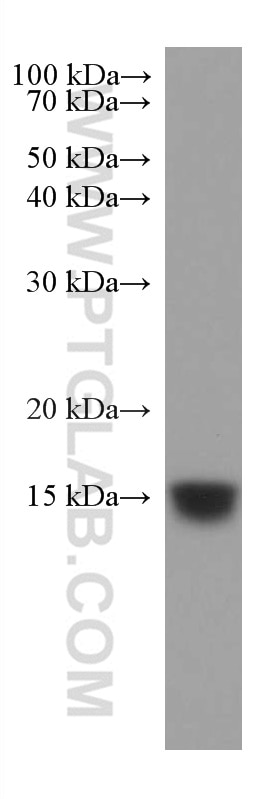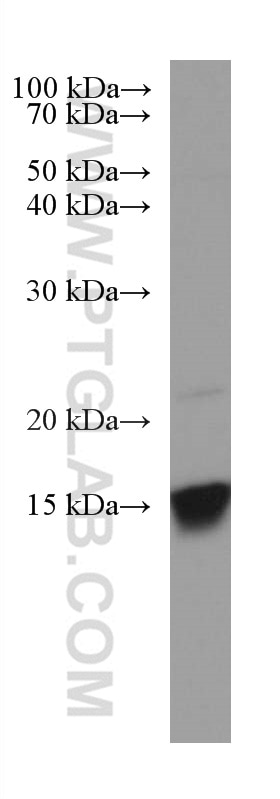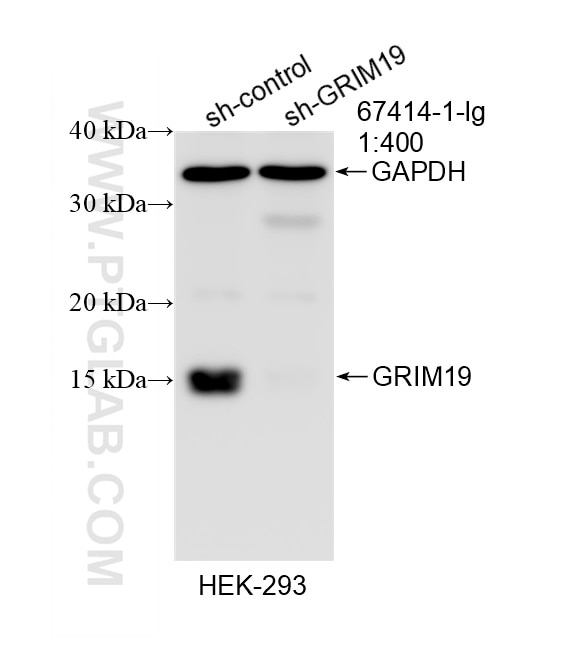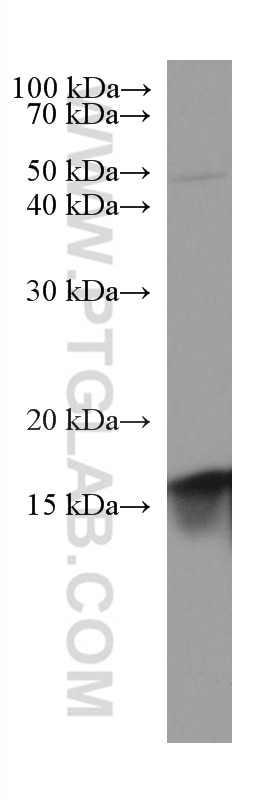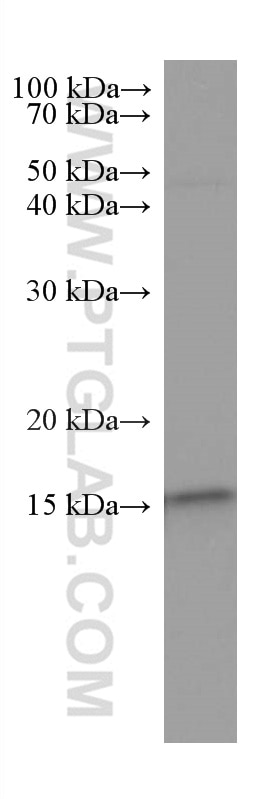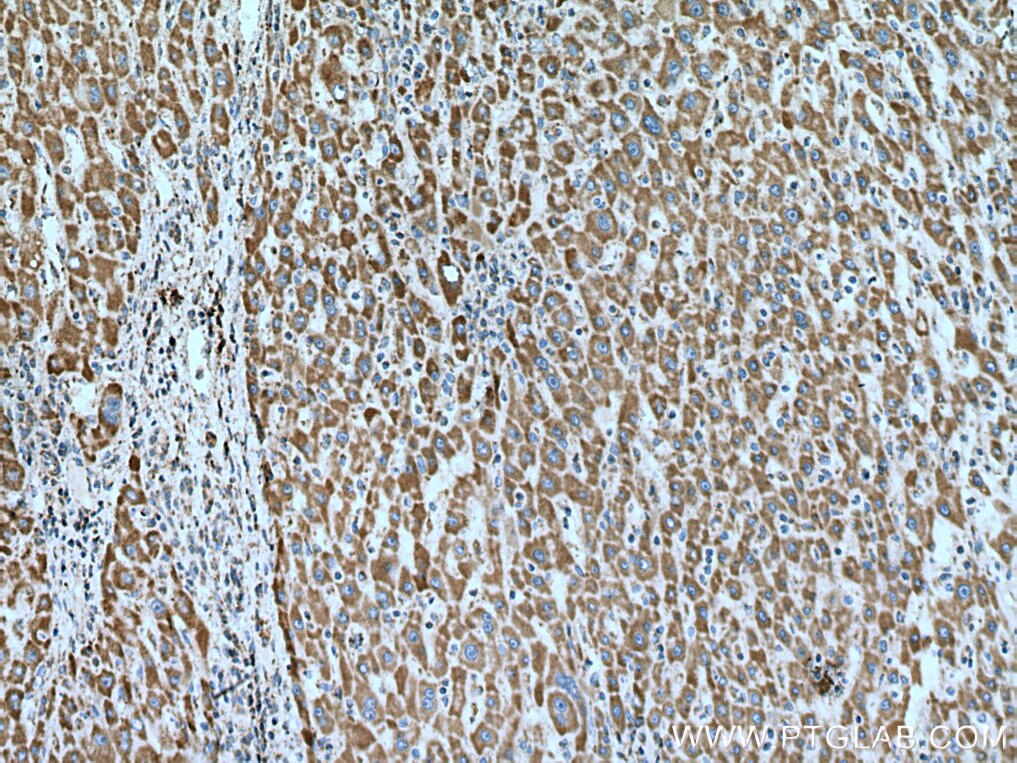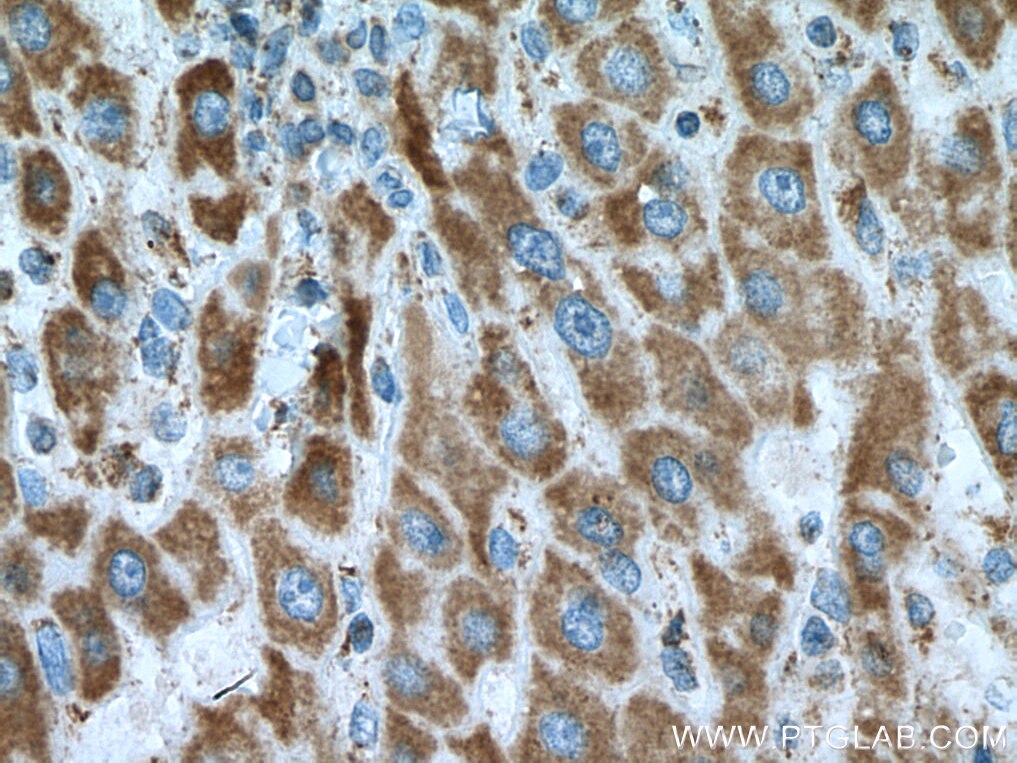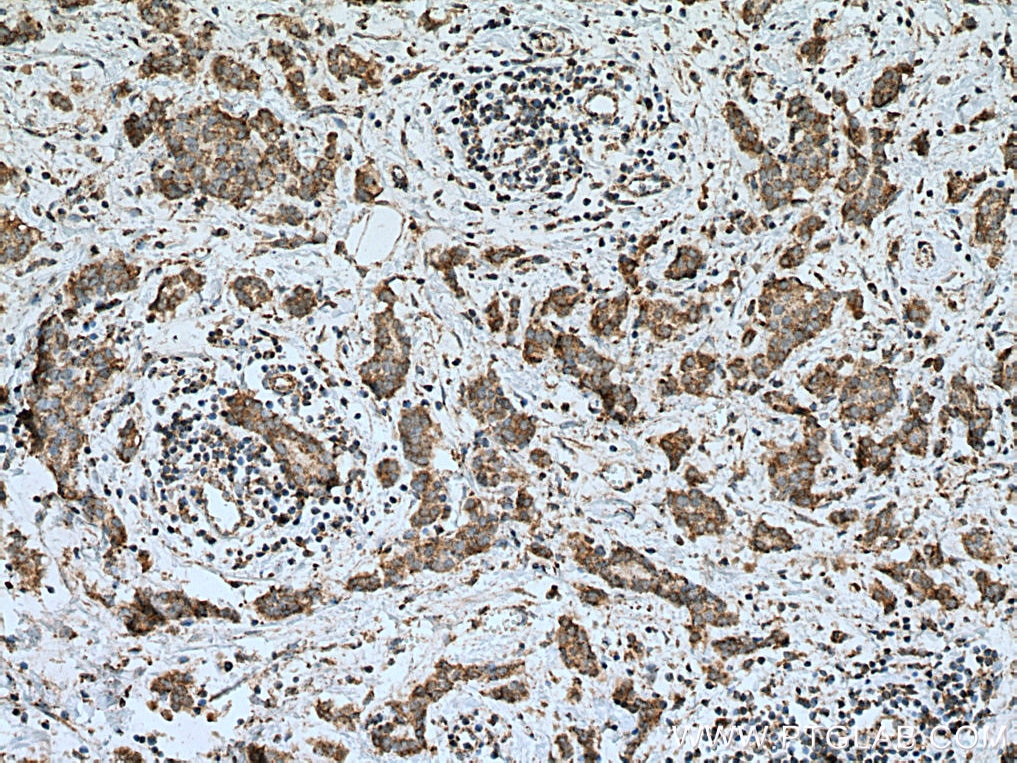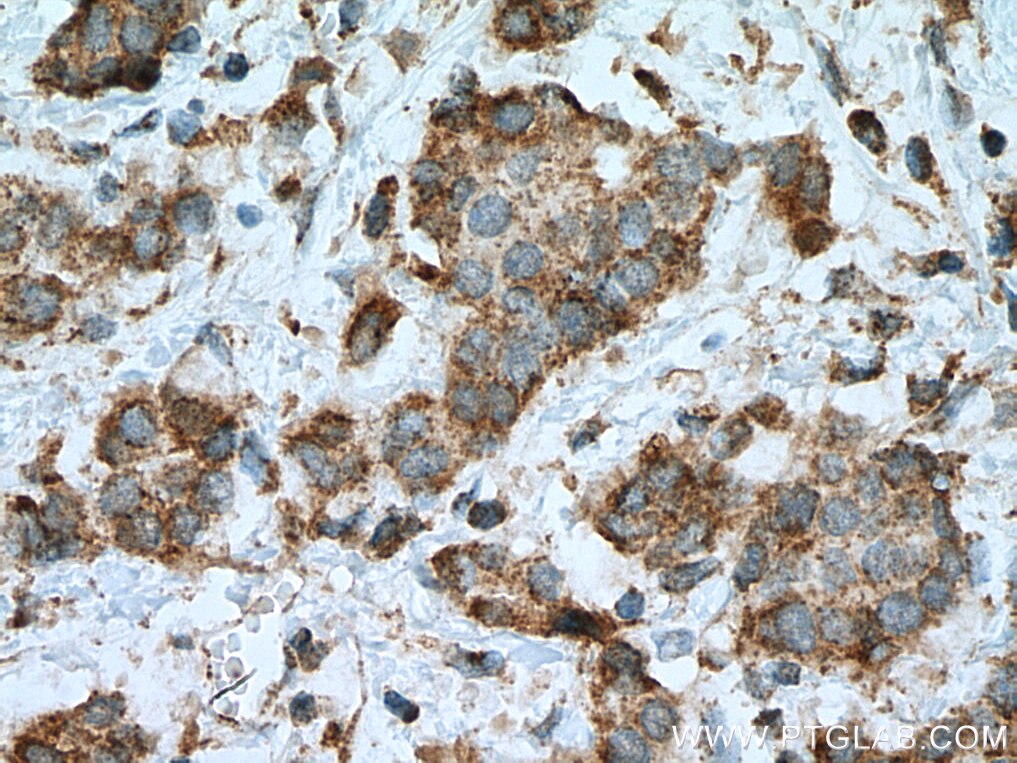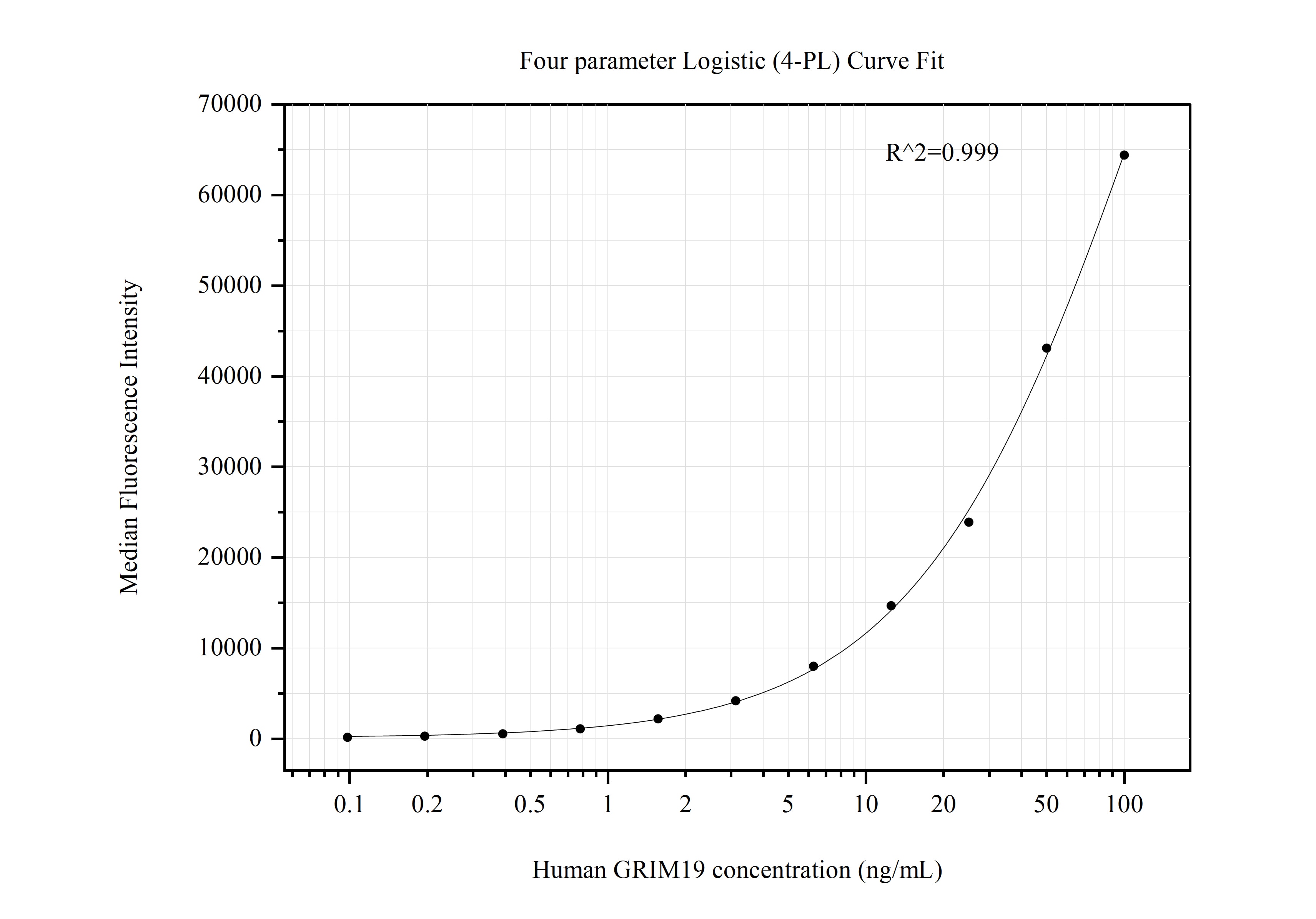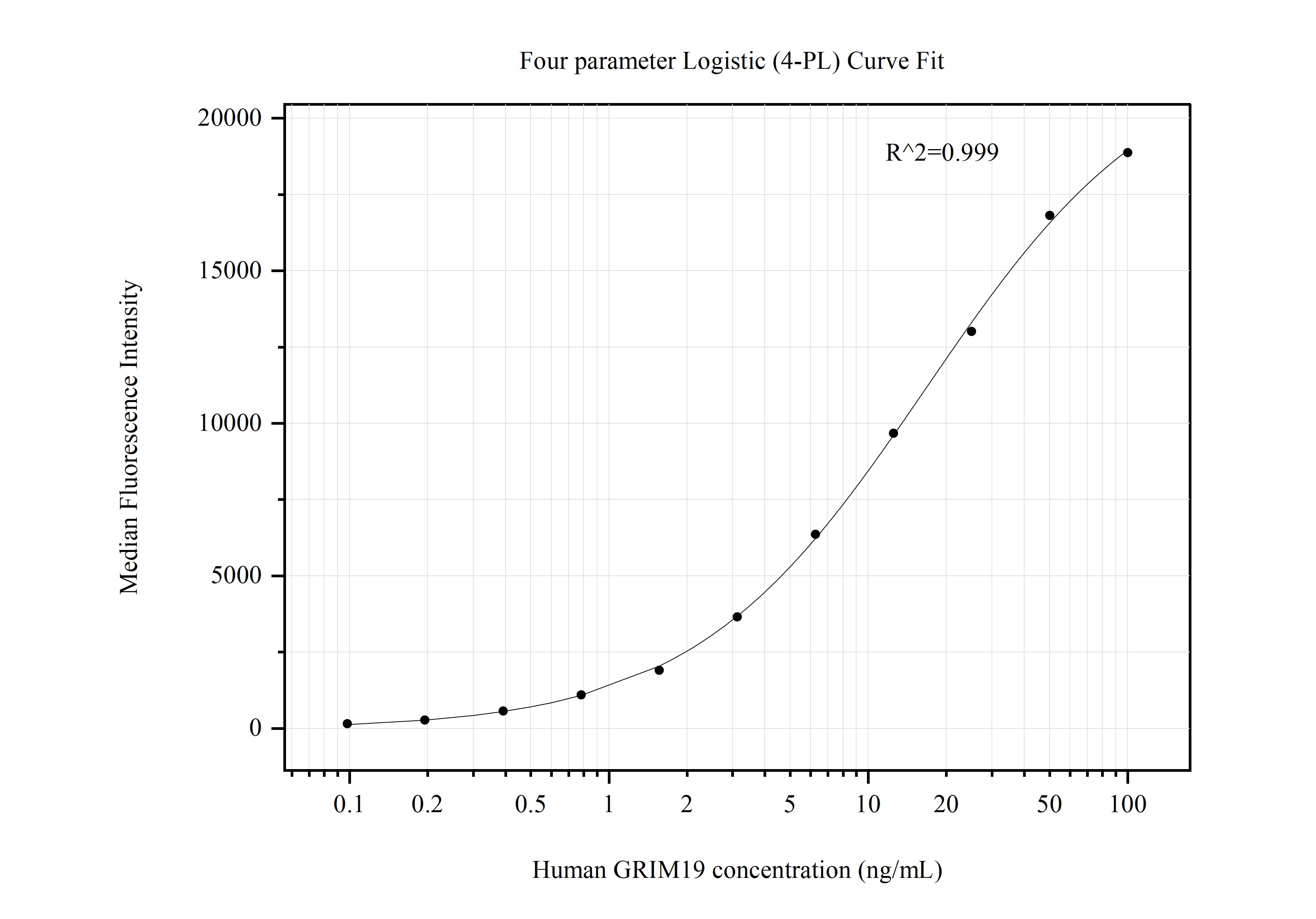Product Information
67414-1-PBS targets GRIM19 as part of a matched antibody pair:
MP50735-1: 67414-2-PBS capture and 67414-1-PBS detection (validated in Cytometric bead array)
MP50735-3: 67414-1-PBS capture and 67414-4-PBS detection (validated in Cytometric bead array)
Unconjugated mouse monoclonal antibody pair in PBS only (BSA and azide free) storage buffer at a concentration of 1 mg/mL, ready for conjugation.
This conjugation ready format makes antibodies ideal for use in many applications including: ELISAs, multiplex assays requiring matched pairs, mass cytometry, and multiplex imaging applications.Antibody use should be optimized by the end user for each application and assay.
| Tested Reactivity | human |
| Host / Isotype | Mouse / IgG1 |
| Class | Monoclonal |
| Type | Antibody |
| Immunogen |
CatNo: Ag20855 Product name: Recombinant human GRIM19 protein Source: e coli.-derived, PET30a Tag: 6*His Domain: 1-144 aa of BC009189 Sequence: MAASKVKQDMPPPGGYGPIDYKRNLPRRGLSGYSMLAIGIGTLIYGHWSIMKWNRERRRLQIEDFEARIALLPLLQAETDRRTLQMLRENLEEEAIIMKDVPDWKVGESVFHTTRWVPPLIGELYGLRTTEEALHASHGFMWYT Predict reactive species |
| Full Name | NADH dehydrogenase (ubiquinone) 1 alpha subcomplex, 13 |
| Calculated Molecular Weight | 16.5 kDa |
| Observed Molecular Weight | 16-18 kDa |
| GenBank Accession Number | BC009189 |
| Gene Symbol | GRIM19 |
| Gene ID (NCBI) | 51079 |
| RRID | AB_2882654 |
| Conjugate | Unconjugated |
| Form | Liquid |
| Purification Method | Protein G purification |
| UNIPROT ID | Q9P0J0 |
| Storage Buffer | PBS only, pH 7.3. |
| Storage Conditions | Store at -80°C. |
Background Information
GRIM19(Gene associated with retinoic and interferon-induced mortality 19 protein) is also named as NDUFA13 ,CI-B16.6 and belongs to the complex I NDUFA13 subunit family.t GRIM-19 may distribute in the mitochondria and/or nucleus depending on the cell type.Alternatively, its cellular localization may be regulated by post-translational modifications such as phosphorylation and acetylation. Lastly, GRIM-19 may exist in different isoforms that may be distributed in distinct cellular locations(PMID:12628925).

